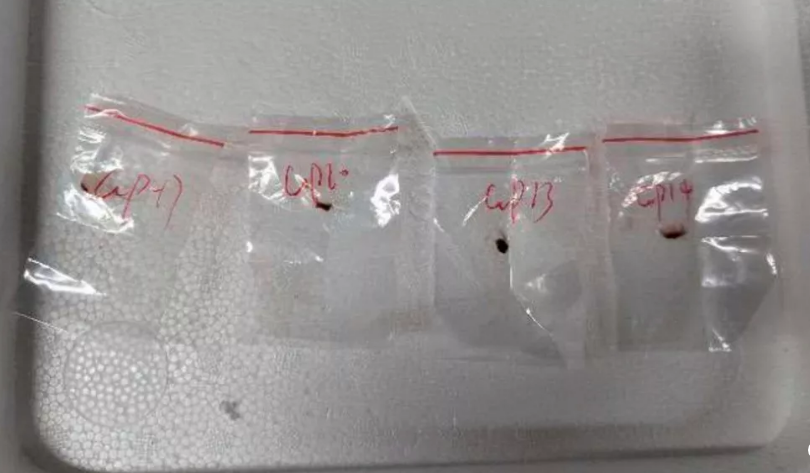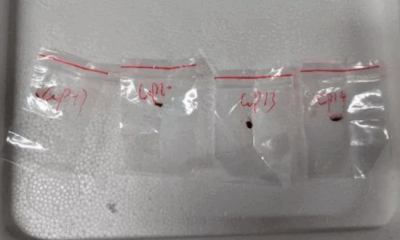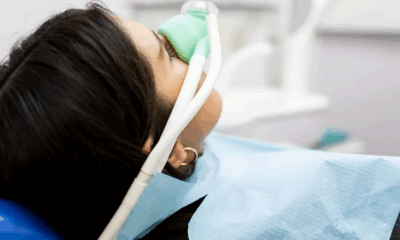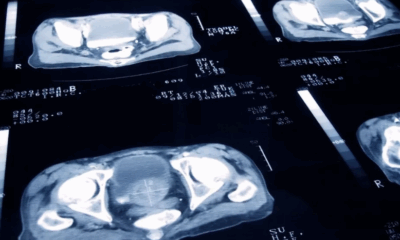Health
Rare ‘No-Burp Syndrome’ Gains Attention, But Treatment Remains Costly
A rare condition known as retrograde cricopharyngeal dysfunction (R-CPD), or “no-burp syndrome,” is gaining attention on social media, with medical specialists and affected individuals raising awareness about its impact. Despite growing recognition, treatment options remain expensive and largely inaccessible.
For many individuals, burping is a routine bodily function, but for those with R-CPD, it is impossible. The condition, formally identified in 2019 by Dr. Robert Bastian of the Bastian Voice Institute, prevents the cricopharyngeus muscle in the upper esophagus from relaxing, trapping air in the digestive system. This results in painful bloating, gurgling sounds in the throat, and severe discomfort.
Dulcie, a 23-year-old research student from the UK, experienced these symptoms for years without understanding the cause. “Now I know what R-CPD is, I blame it for many of the barriers to generally good physical and mental health that I face,” she told Euronews Health. She also links her severe phobia of vomiting to the condition, as the pressure buildup in her chest sometimes induces nausea.
Despite increasing awareness, R-CPD remains largely unrecognized by healthcare professionals. “There is a treatment for the condition, but it is not NHS-approved yet because many doctors are unaware of it or don’t consider it a health issue,” said Mr. Yakubu Karagama, a laryngologist at Guy’s and St Thomas’ NHS Foundation Trust. He argues that the condition is often dismissed as a social issue rather than a legitimate medical concern.
The Challenges of Diagnosis and Treatment
Diagnosing R-CPD typically requires an endoscopy, but few doctors specialize in the condition. The most effective treatment currently available is botulinum toxin (Botox) injections into the cricopharyngeus muscle, which helps relax the muscle and allow burping. However, the treatment is costly—upwards of £3,000 (€3,621) through private healthcare in the UK—and is not widely covered by insurance due to the condition’s relatively recent recognition.
A recent study by Texas-based researchers found that individuals with R-CPD were more likely to struggle with anxiety, depression, and social embarrassment, impacting their professional and personal lives. “Sitting up at my desk for full days is actively painful,” Dulcie said. “I can’t do anything in the evenings because I have to lie down for the gurgles and pain to subside.”
For Amelia, a 41-year-old who was formally diagnosed with R-CPD, the condition severely impacted her social life. “I couldn’t drink with my food, couldn’t enjoy nights out or meals out. It was embarrassing, painful, and socially debilitating,” she said. After receiving Botox treatment six years ago at a cost of £5,000 (€6,038), she described it as “the best money I’ve ever spent.”
Alternative Approaches and Hope for the Future
While Botox treatment is effective in about 90% of cases, the procedure carries risks, including temporary acid reflux and swallowing difficulties. Some patients have reported success with alternative methods, such as physical exercises targeting the neck and throat muscles.
Dr. Lee Akst, a laryngologist at Johns Hopkins Medicine, suggests head posture exercises may encourage burping. However, he acknowledges that success rates are anecdotal, with no standardized regimen available.
For now, many individuals suffering from R-CPD continue to push for greater medical recognition and accessibility to treatment. “If this works, it will change my life,” said Dulcie, who is scheduled for treatment soon. “I’ll be able to eat a full meal out with friends without retreating home in discomfort.”
As awareness grows, there is hope that increased research and recognition will lead to broader medical acknowledgment and more affordable treatment options for those living with no-burp syndrome.
Health
Europe Faces Growing Challenges in Meeting Medical Care Needs, EU Report Shows

A new report has highlighted stark disparities in healthcare access across Europe, revealing that a growing number of citizens face unmet medical needs due to systemic issues such as high costs and long waiting times.
According to the latest data from Eurostat and the Health at a Glance: Europe 2024 report, 3.8 per cent of EU residents aged 16 and over reported unmet medical needs in the past year. However, the percentage climbs significantly when focusing solely on individuals who actively required healthcare services — with some countries reporting unmet needs among over 20 per cent of this group.
The causes are twofold: healthcare system barriers, including long waiting lists and treatment costs, account for 2.4 per cent of all cases, while 1.4 per cent stem from personal reasons such as fear of doctors, lack of time, or lack of knowledge about available care.
Unmet healthcare needs vary widely across the continent. Estonia tops the list within the EU, with 15.5 per cent of people reporting unmet needs, followed closely by Greece and Albania, each over 13 per cent. Even wealthier Nordic countries show surprising figures — Denmark (12.2 per cent), Finland, and Norway (over 7.5 per cent) — despite high healthcare spending. Conversely, countries such as Germany (0.5 per cent), Austria (1.3 per cent), and the Netherlands (1.4 per cent) report the lowest levels, pointing to more efficient and accessible healthcare systems.
Cost is a dominant barrier in nations like Greece and Albania, where over 9 per cent of citizens cited unaffordable care. In contrast, long waiting times are the primary issue in countries like Estonia (12 per cent) and Finland (7.5 per cent).
Income inequality also plays a major role. On average, 3.8 per cent of low-income individuals across the EU report unmet needs due to healthcare system issues — more than triple the 1.2 per cent reported by higher-income groups. In Greece, that gap is particularly wide, with 23 per cent of low-income respondents affected.
Healthcare experts say these disparities reflect more than just economic factors. Dr. Tit Albreht, President of the European Public Health Association (EUPHA), noted, “Unmet health needs arise from different reasons, including how well healthcare governance integrates services to meet population needs.”
Industry leaders, such as Tina Taube of the European Federation of Pharmaceutical Industries and Associations (EFPIA), stressed the importance of timely access to diagnosis and treatment. “Unmet needs are context-specific,” she said. “It’s not just about product availability, but also healthcare system readiness.”
Andy Powrie-Smith of EFPIA added that patients in some European countries wait up to seven times longer than others for the same treatments due to regulatory delays and varying national infrastructures.
The findings underscore the need for a more coordinated, equitable healthcare strategy across the continent, especially as Europe faces the challenges of an ageing population and increasingly complex medical technologies.
Health
Chinese Nationals Charged in U.S. with Smuggling Toxic Fungus Labeled a Potential Agroterrorism Threat

U.S. federal authorities have charged two Chinese nationals in connection with smuggling a dangerous agricultural fungus into the country, a move investigators describe as posing significant national security risks.
Yunqing Jian, 33, and Zunyong Liu, 34, are accused of conspiracy, smuggling, making false statements, and visa fraud after allegedly attempting to bring Fusarium graminearum — a toxic fungus capable of devastating crops and harming humans and livestock — into the United States. The case was detailed in a court filing by the Federal Bureau of Investigation (FBI) in Detroit.
The fungus, which targets essential food staples like wheat, maize, barley, and rice, is described in a scientific journal cited by the FBI as a “potential agroterrorism weapon.” Experts warn that its spread could inflict serious damage on global food security and agricultural economies.
U.S. Attorney Jerome Gorgon Jr. emphasized the seriousness of the case, stating: “The alleged actions of these Chinese nationals, including a loyal member of the Chinese Communist Party, are of the gravest national security concerns.”
Jian made her first appearance in a Detroit federal court on Tuesday and remains in custody awaiting a bond hearing scheduled for Thursday. A court-appointed attorney for her initial appearance declined to comment.
According to the FBI’s complaint, the investigation began in July 2024 when Liu was stopped at Detroit Metropolitan Airport. During a routine screening, customs officials discovered suspicious red plant material in his backpack. Liu initially claimed not to know what it was but later admitted he planned to use it for research purposes at the University of Michigan, where Jian is currently employed and where Liu previously worked.
Authorities say Liu’s mobile phone contained an article titled “Plant-Pathogen Warfare under Changing Climate Conditions,” raising further concerns about the intended use of the samples. The FBI believes the two individuals were coordinating to introduce the pathogen into a U.S. research setting without proper clearance or oversight.
Liu was denied entry to the U.S. and deported in July. Charges against both individuals were filed this week, as prosecutors continue to investigate the scope of the alleged conspiracy.
The case underscores growing concerns in the U.S. over biosecurity and potential misuse of scientific research amid rising geopolitical tensions.
Health
US Expands Measles Vaccination Guidance Amid Global Surge in Cases
-

 Business1 year ago
Business1 year agoSaudi Arabia’s Model for Sustainable Aviation Practices
-

 Business1 year ago
Business1 year agoRecent Developments in Small Business Taxes
-

 Politics1 year ago
Politics1 year agoWho was Ebrahim Raisi and his status in Iranian Politics?
-

 Business11 months ago
Business11 months agoCarrectly: Revolutionizing Car Care in Chicago
-

 Business11 months ago
Business11 months agoSaudi Arabia: Foreign Direct Investment Rises by 5.6% in Q1
-

 Technology1 year ago
Technology1 year agoComparing Apple Vision Pro and Meta Quest 3
-

 Politics1 year ago
Politics1 year agoIndonesia and Malaysia Call for Israel’s Compliance with ICJ Ruling on Gaza Offensive
-

 Sports10 months ago
Sports10 months agoKeely Hodgkinson Wins Britain’s First Athletics Gold at Paris Olympics in 800m


























